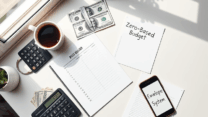
Emergency Fund: How Much to Save and Best Places to Keep It for Financial Security

In today’s unpredictable world, having an emergency fund is one of the most important steps you can take to protect your financial well-being. Whether it’s a sudden job loss, medical emergency, or unexpected car repair, life has a way of throwing curveballs when we least expect them. As a financial expert and fellow American, I want to walk you through how much you should save in your emergency fund and the best places to keep it safe, accessible, and growing.
What Is an Emergency Fund and Why Do You Need One?
An emergency fund is a dedicated savings account that acts as a financial buffer during unexpected life events. Unlike general savings, this fund is not meant for vacations or planned expenses—it’s strictly for emergencies.
According to the Federal Reserve’s Report on the Economic Well-Being of U.S. Households, nearly 37% of Americans would struggle to cover a $400 emergency expense. This highlights the importance of having a safety net in place.
How Much Should You Save in an Emergency Fund?
The amount you should save depends on your personal circumstances, but financial experts generally recommend the following:
– Minimum: At least 3 months’ worth of essential living expenses
– Ideal: 6 months’ worth of expenses for greater security
If you’re self-employed, have dependents, or work in a volatile industry, consider saving closer to 9–12 months of expenses.
To calculate your target amount:
1. List your essential monthly expenses (rent/mortgage, utilities, groceries, insurance, transportation, etc.)
2. Multiply that total by the number of months you want to cover
For example, if your monthly expenses are $3,000, a 6-month emergency fund would be $18,000.
Where to Keep Your Emergency Fund
Your emergency fund should be easily accessible, safe, and ideally earn some interest. Here are the best options:
1. High-Yield Savings Accounts
These accounts offer higher interest rates than traditional savings accounts and are FDIC-insured up to $250,000 per depositor, per bank. Many online banks offer rates above 3% APY (as of 2023).
Pros:
– Easy access
– Competitive interest rates
– FDIC insured
2. Money Market Accounts
Money market accounts combine features of savings and checking accounts. They typically offer higher interest rates and may come with check-writing privileges.
Pros:
– Slightly higher interest than savings accounts
– FDIC insured
– Some liquidity
3. Certificates of Deposit (CDs) with No Penalty
No-penalty CDs allow you to withdraw your money before the term ends without losing interest. These are a good option if you don’t anticipate needing the funds immediately.
Pros:
– Higher interest rates than savings accounts
– No penalty for early withdrawal (check terms)
Cons:
– Limited access compared to savings accounts
4. Treasury Bills (T-Bills)
Short-term U.S. government securities that mature in a year or less. They are considered extremely safe and can be purchased through TreasuryDirect.gov.
Pros:
– Backed by the U.S. government
– Competitive yields
Cons:
– Slightly less liquid than savings accounts
Where NOT to Keep Your Emergency Fund
Avoid putting your emergency fund in the following places:
– Stocks or mutual funds: Too volatile and risky for short-term needs
– Retirement accounts (like IRAs or 401(k)s): Early withdrawals may incur taxes and penalties
– Cash at home: Not secure and earns no interest
Tips for Building Your Emergency Fund
– Set a monthly savings goal and automate transfers
– Use windfalls like tax refunds or bonuses to boost your fund
– Cut non-essential expenses temporarily to accelerate savings
When to Use Your Emergency Fund
Only dip into your emergency fund for true emergencies, such as:
– Job loss
– Major medical expenses
– Urgent home or car repairs
Avoid using it for discretionary spending like vacations, gifts, or non-urgent purchases.
Final Thoughts
An emergency fund is your financial safety net. It provides peace of mind and protects you from going into debt when life throws you a curveball. Start small if you need to, but start today. Your future self will thank you.
Disclaimer
This article is for informational purposes only and does not constitute financial advice. Always consult with a certified financial advisor or tax professional before making any financial decisions. The author and publisher are not liable for any actions taken based on the information provided herein.
Sources
– Federal Reserve Board. (2022). Report on the Economic Well-Being of U.S. Households. https://www.federalreserve.gov/publications/2022-economic-well-being-of-us-households-in-2021.htm
– FDIC. (n.d.). Deposit Insurance. https://www.fdic.gov/resources/deposit-insurance/








답글 남기기